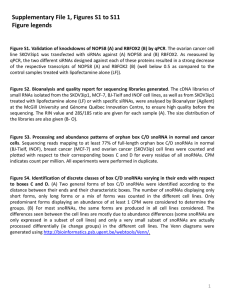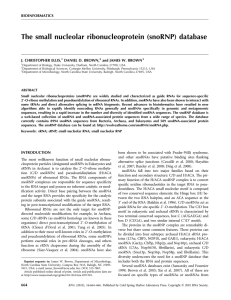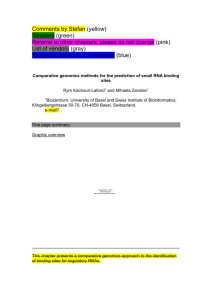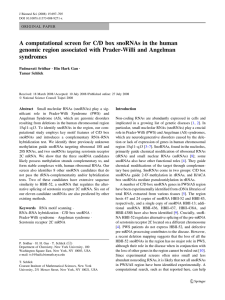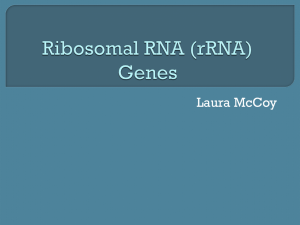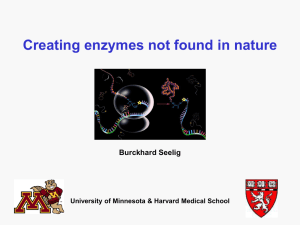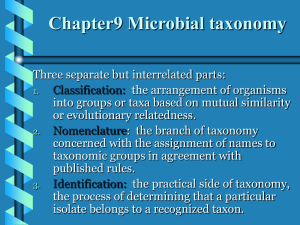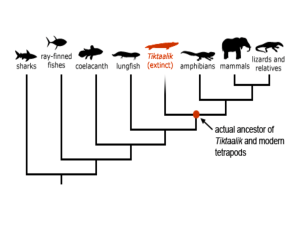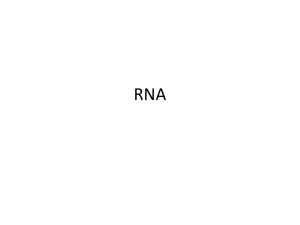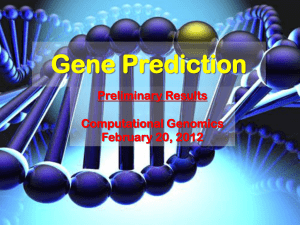Small Nucleolar RNA
advertisement
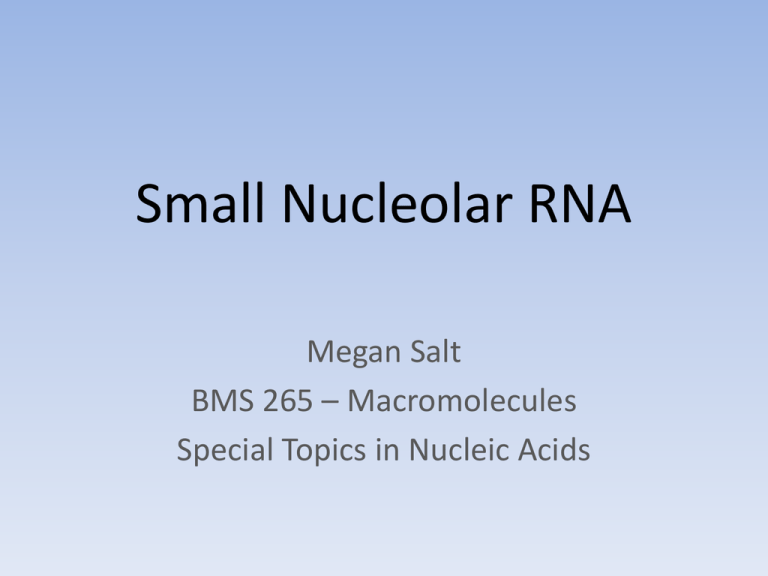
Small Nucleolar RNA Megan Salt BMS 265 – Macromolecules Special Topics in Nucleic Acids Discovery of snoRNAs U3 snoRNA Wikipedia • First snoRNA found in late 1960’s (U3) • Band representing sn and snoRNAs seen from rat nuclei • High uridine content led to naming convention There are several mechanisms of snoRNA biosynthesis • Yeast snoRNAs are generally monocistronic • Plants generate polycistronic snoRNAs • Vertebrate snoRNAs are often within introns of rRNA processing genes Monocistronic Polycistronic Intronic There are several mechanisms of snoRNA biosynthesis • Polycistronic and intronic snoRNAs require further processing to function Endonucleases 5’ 3’ Exonucleases Splicing machinery snoRNAs mediate the modification of other RNA nucleotides 2’-O-methylation • Human 18S, 5.8S, and 28S rRNAs contain 110 2'-Omethyl groups and almost 100 pseudouridines • snoRNAs direct methyltransferase and pseudouridine synthase enzymes to the appropriate rRNA nucleotide Pseudouridylation snoRNAs act to guide nucleotide modifying enzymes to the proper rRNA site • Antisense elements dictate where the modifications are catalyzed Filipowicz et al. 2002 • Target sequences have been confirmed also in snRNAs, as well as mRNAs snoRNAs function as part of a ribonucleoprotein complex Filipowicz et al. 2002 Evolution of snoRNAs Lafontaine et al. 1998. • Enzymes likely evolved from gene duplications of tRNA or rRNA processing enzymes • Ancestral snoRNAs likely guided these enzymes and acquired specificities for novel rRNA sites snoRNAs can be used as a biological tool • (1) snoRNA localization elements have been utilized to direct new RNA sequences to the nucleolus • (2) snoRNAs have been used to direct nucleotide modifications to new sites in rRNA via the expression of snoRNAs containing novel guide sequences snoRNAs have been implicated in human disease • HBII-52 snoRNA involved in modification of serotonin receptor mRNA • Loss of either the paternal or maternal copy of this region leads to two neurological disorders: Prader-Willi or Angelman syndrome, respectively QUESTIONS??
